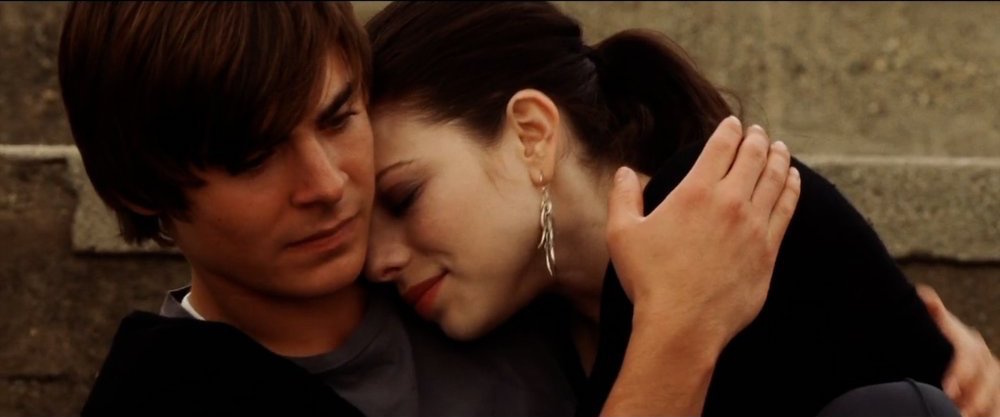
It’s true that the most unbelievable thing in a film about a man who turns into his high school self is that when Matthew Perry was 17 he looked like Zac Efron. 17 Again (2009) is Big (1988) inverted and drawing some unsettling connections between mid-life crises comedies like The Family Man (2000) and coming of age dramas like Lady Bird (2017) and The Perks Of Being A Wallflower (2012). Regardless of 17 Again‘s success or failure as a work of escapism it proves to be fascinating.
Of course, as is always the case in these types of movies, there’s an awkward incest plot. Mike (Perry/Efron), 17 again and in love with his estranged wife Scarlet (Leslie Mann), has inadvertently drawn the romantic interests of his 18 year old daughter Margaret (Michelle Trachtenberg). With both his wife and his daughter interested in him sexually, Mike represents a kind of patriarchal oedipist fantasy that may have its roots as a narrative motif in Back To The Future (1985). 17 Again doesn’t exploit this sub plot for very long, but its inclusion indicates a misogynistic form of wish fulfillment wherein the male exists as the ultimate primitive alpha; like a lion who mates with its offspring as well as their mother.
There’s more that’s problematic in 17 Again but nothing quite as shocking, just dated. What’s interesting is how Mike, in a series of desperate maneuvers to make his children and his wife’s life better, not only fills the paternal vacuum he himself has left but comes to a more mature understanding of himself and his responsibilities. The whole purpose of Matthew Perry becoming young Efron again was to come of age and be the father/husband he should have been all along.
All of this hinges on the notion that a mid-life crisis is essentially an emotional regression. 17 Again obviously takes this literally, even going so far as to equate going to school with going to court. 17 Again also suggests that the gender politics of a high school are identical to those of individuals in middle age. These generalizations, devoid of any nuance, are reductive and betray the very gimmick of the plot.
No one in 17 Again is a character, they are all archetypal figures designed for mass appeal and easy intellectual consumption. The greatest weakness of the film is that Mike, as Perry and as Efron, is a totally inconsistent character in terms of behavior and manner. Perry is cast to be Chandler Bing in a full tailspin while Efron signifies a certain High School Musical well intentioned naivety. There’s no effort made by Efron, Perry or the filmmakers to bridge these opposing personalities within the one character.
The two narrative tracks (“mid-life crisis” and “coming of age”) are, in terms of dramatic beats, identical within the complex of mass produced Hollywood cinema. 17 Again constantly draws parallels between the two types of narrative, revealing their artifice as well as the human truths that have made that artifice so appealing to audiences for so long. Just as in 13 Going On 30 (2004), the message of 17 Again is that one can never be too old to be immature, but it’s in the telling of these stories that these films suggest audiences, be they 30 or 17, require their narratives to be identically constructed.
